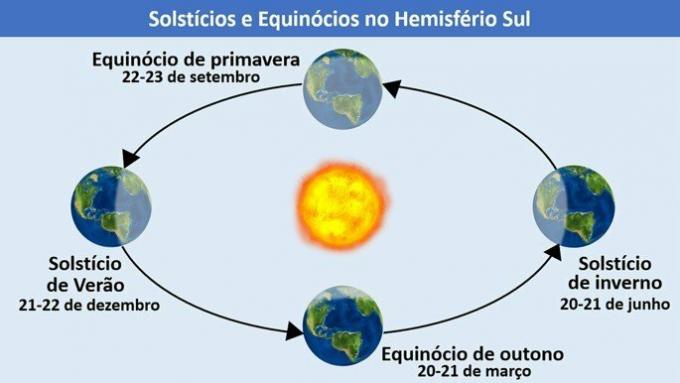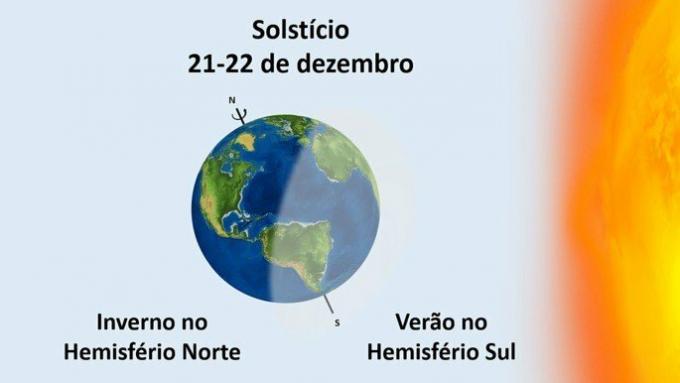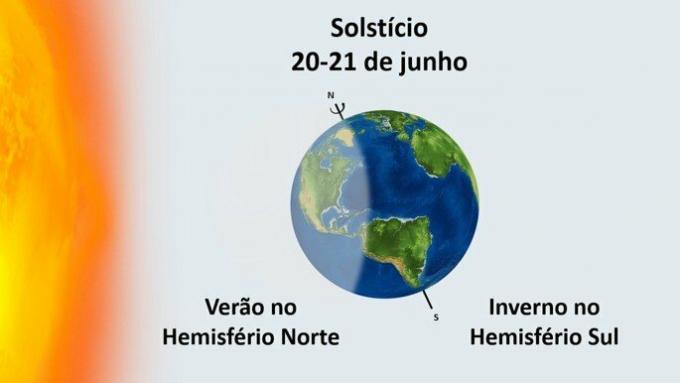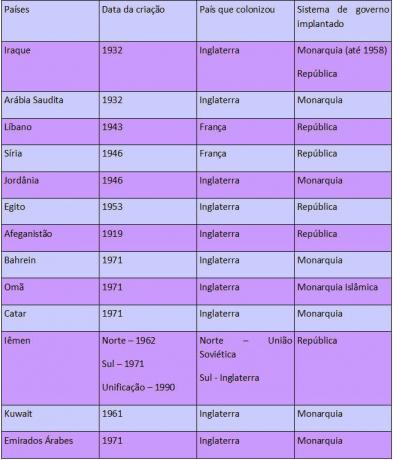The solstice and equinox are astronomical phenomena that happen four times a year and record the beginning of the seasons.
These phenomena are related to the uneven incidence of the sun's rays on Earth because of the planet's translation and rotation movement, in addition to its inclination.
On the solstices, the planet is at its maximum tilt and one of the hemispheres receives more sunlight. On the equinoxes, the hemispheres are perpendicular to the sun and the sun's rays hit the planet with the same intensity.
In the Southern Hemisphere, where Brazil is located, events in the year 2021 take place in:
Autumn Equinox: March 20th at 6:38 am
Winter Solstice: June 21st at 00:32
spring equinox: September 22 at 4:21 pm
Summer Solstice: December 21st at 12:59 pm

Translation is the movement the Earth makes around the Sun for a little over 365 days and rotation is the movement around its axis for approximately 24 hours. As the Earth moves, in addition to the fact that it is tilted, there are times when one hemisphere receives more sunlight than the other.
So when the summer solstice happens in the southern hemisphere, the winter solstice happens in the northern hemisphere. Therefore, when it is summer in Brazil (which is in the Southern Hemisphere) it is winter in the United States (which is in the Northern Hemisphere).
Solstice
The word solstice means “still sun”. It comes from Latin and is formed by the joining of Sun it's from sister, which means "to stand still".
In this astronomical event, the planet is tilted at 23.5° and therefore the sun's rays are towards the tropics.
On the solstices, the hemisphere that receives the highest incidence of sunlight is the one that enters summer. is the call Summer Solstice, which takes place in December in the Southern Hemisphere, as the sun's rays are heading towards the Tropic of Capricorn.

The hemisphere that receives the least incidence of sunlight is the one that enters winter and its beginning is marked by the winter solstice, which in the southern hemisphere occurs in the month of June, when the sun's rays fall on the tropic of Cancer.

The day of the summer solstice is the longest day of the year. The day on which the winter solstice takes place is the opposite, as it is the longest night of the year.
As the days go by, the length of day and night changes. It is for this reason that in early summer it takes longer to get dark, as the days are longer, while in early winter it gets dark earlier, as the nights are longer.
Learn more about solstices.
Equinox
The word equinox means “night like day”. It comes from Latin and is formed by the joining of equi, which means "equal", and in heat, which means “night”.
At the equinox, the Sun falls on the equator, that is, on the imaginary line that divides the globe into two hemispheres, in such a way that neither hemisphere receives more or less Sun, as happens in the solstices.
In the spring equinox, which occurs in September for the Southern Hemisphere, night and day have the same duration, the days start to increase little by little, until the summer solstice arrives, when the longest day occurs of the year.

O autumnal equinox marks the beginning of the season in March in the Southern Hemisphere. As time goes by, the days start to get shorter until the nights are made longer by the arrival of the later season, which is winter.

Dates of the solstices and equinoxes
The dates of the solstices and equinoxes are mobile, and may occur on the following days:
Autumn Equinox: March 20th or 21st
Winter Solstice: June 20th or 21st
spring equinox: September 22nd or 23rd
Summer Solstice: December 21st or 22nd
In Brazil, and in the rest of the Southern Hemisphere, the beginning of the seasons will occur in:
| Autumn Equinox | Winter Solstice | spring equinox | Summer Solstice | |
|---|---|---|---|---|
| 2022 | March 20th at 12:33 pm | June 21st at 6:14 am | September 22 at 10:04 pm | December 21 at 6:48 pm |
| 2023 | March 20 at 6:25 pm | June 21 at 11:58 am | September 23 at 3:50 am | December 22 at 00:27 |
| 2024 | March 20th at 12:06 am | June 20 at 5:51 pm | September 22 at 9:44 am | December 21st at 6:21 am |
| 2025 | March 20 at 6:02 am | June 20th at 11:42 pm | September 22 at 3:19 pm | December 21st at 12:03 pm |
Also read about the seasons.


